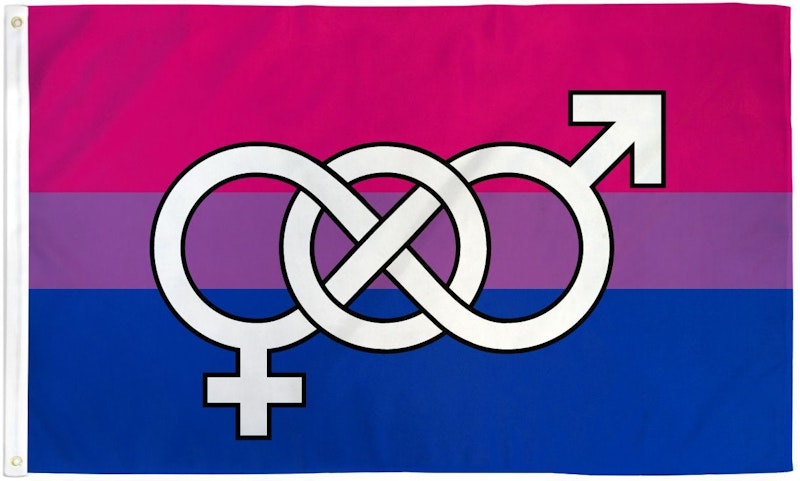I used to think bisexuality meant being straight but liking a little extra something on the side. The mainstream discourse about LGBTQ rights in the 1990s focused exclusively on the L and G, and all the other letters were just footnotes. Straight people saw bisexuals as sex freaks who’d fuck anyone. Gay people questioned bisexuals’ inclusion in the movement because of “straight-passing privilege.” Both groups questioned whether bisexuality even existed. I internalized all of this as a 16-year-old closeted bisexual and never told anybody because I wasn’t “queer enough.”
Discovering the online bisexual community at 29 finally got me to come out. Watching Verity Ritchie on YouTube led to meeting fellow bisexuals through Bi Tumblr, which then led to discovering an entire history of bisexual activists no one told me about. Bisexuals have been part of the gay liberation movement since the beginning; it was polyamorous bisexual feminist activist Brenda Howard that came up with the idea of having Pride be a week-long celebration. Yet the same biphobia from the 1990s still exists today.
Last year, La Trobe University in Australia conducted the largest study ever to find out why bisexuals struggle with mental health more than straight and gay people. The study found many factors that include bisexuals in opposite-sex relationships, lack of support from their partners, and internalized biphobia. This is nothing new; previous studies have shown a relationship between poor mental health among bisexuals and biphobia—from both straight and gay people.
There are also very few bi-specific resources for mental health providers. As therapist and bisexual activist Patrick RichardsFink told me a few years ago, “Even though we’re half of the queer population, we’re not recognized. In my Master’s program, if I hadn’t been there bringing information, there would have been basically little or no mention of bisexuality and bisexual specific issues.”
Unlike other sexual orientations, there has been a strange urge among certain scientists to see if bisexuality exists. Three researchers in 2005 published an infamous paper that claimed bisexual men are really gay. For this study, the researchers put sensors on the penises of a small sample of gay, straight, and bisexual men to measure their reactions to pornography, and found that the bisexual men reacted more to male-on-male porn than porn with women.
One of the original researchers, Dr. Gerulf Rieger, recently revisited this idea with a new study and found different results. With a sample size of 400 men total, Dr. Rieger and his fellow researchers found that bisexual men responded to porn featuring both men and women equally, thus proving bisexual men exist once and for all. However, this latest study is just as problematic as the first.
People respond to porn differently. Some might not even like porn, so it’s ridiculous to suggest watching porn will automatically cause arousal. Both studies also perpetuate the false idea that bisexuals must be attracted to both sexes equally. I’m no less bisexual because I’ve been in a relationship with only one man so far. Furthermore, while it’s great that science shows sexuality and gender identity are more complicated than originally thought, why does the validity of bisexuality have to depend on peer-reviewed scientific articles?
Audre Lorde wrote about how exhausting it is for marginalized people to educate others about their humanity. “The oppressors maintain their position and evade their responsibility for their own actions,” she said. “There is a constant drain of energy which might be better used in redefining ourselves and devising realistic scenarios for altering the present and constructing the future.” The time and energy wasted on debunking the same biphobic stereotypes could be used for tackling issues that disproportionately affect bisexuals, including domestic violence and health disparities. Yet these disparities are often the result of biphobic stereotypes, so finding balance between both is a never-ending struggle.

